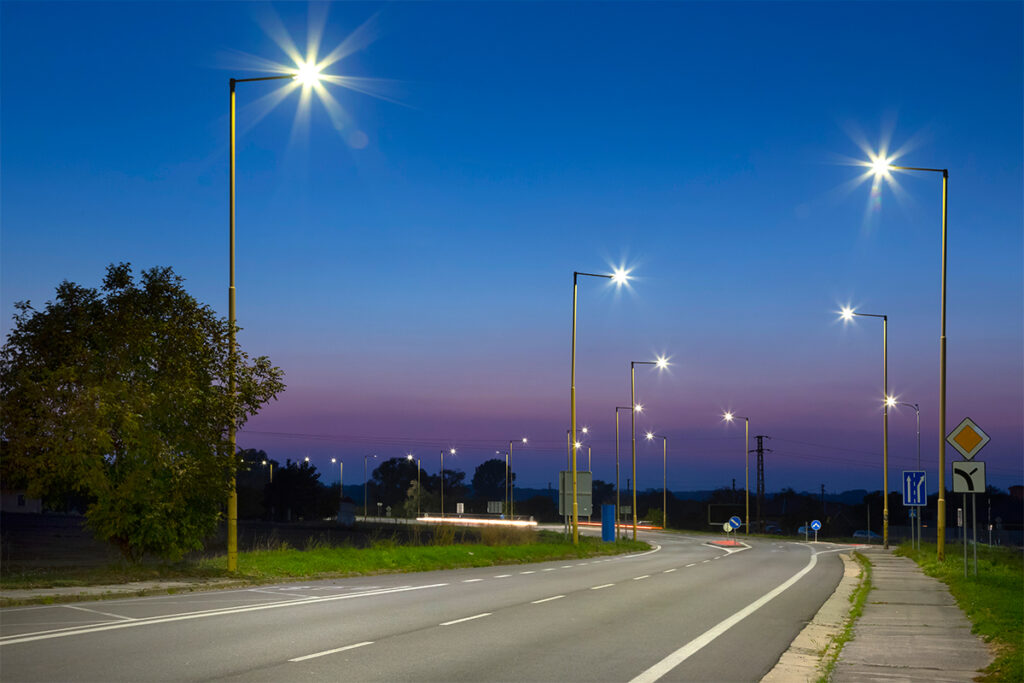
Light pollution, the excessive, misdirected, or invasive artificial illumination of the night sky, is a growing concern in both urban and rural environments. While LED street lighting has offered energy-efficient solutions to illumination needs, improper usage contributes to light pollution. However, through careful planning and execution, LED street lighting can be employed in ways that significantly reduce light pollution while providing ample illumination for safety and functionality.
Light pollution includes glare, skyglow, and light trespass. Glare is excessive brightness that causes visual discomfort, while skyglow refers to the brightening of the night sky over inhabited areas. Light trespass occurs when unwanted or intrusive light enters one’s property. LED lights, known for their high-intensity brightness, can exacerbate these forms of light pollution if not properly managed.
Table of Contents
Benefits of LED Street Lights

Source: mic-led.com
LED street lights have many advantages over traditional lights. These include energy efficiency, durability, and longer life span. Due to their high luminous efficacy, LED lights use much less energy than incandescent and compact fluorescent lights, saving money and reducing environmental impact. The longer life span also means fewer resources are used in manufacturing, packaging, and transportation.
Minimizing Pollution with LEDs
Several strategies can be used to make LED street lighting more night-sky friendly. The first is to use fully shielded fixtures that prevent light from being emitted upwards or sideways. Instead, the light should only shine down onto the streets and sidewalks. Secondly, select LED lights with a correlated color temperature (CCT) of 3000K or less. Higher CCT values result in a greater amount of blue light that contributes more significantly to skyglow. Lastly, implementing dimming capabilities and smart control systems allows for the adjustment of light levels based on the time of night, traffic volume, or other relevant factors.
Regulatory Approaches to Curb Light Pollution

Source: wired.com
An effective approach to mitigating light pollution involves implementing regulatory measures. Cities and municipalities can enact lighting ordinances that stipulate the maximum brightness, shielding requirements, and color temperature of outdoor lights. For example, the International Dark-Sky Association offers a model lighting ordinance that provides a comprehensive framework. Incorporating dark-sky-friendly practices into building and zoning codes ensures long-term adherence to such measures.
The Role of Public Awareness and Education
Public awareness and education are key to reducing light pollution. Many people are unaware of the concept of light pollution, its impacts, and the role of LED street lighting in mitigating it. Effective communication about the environmental, health, and economic benefits of responsibly used LED lights can inspire individuals, businesses, and communities to adopt better lighting practices. Educational initiatives can include community workshops, informational materials, and cooperative partnerships with schools and other organizations.
Final Thoughts

Source: gostargazing.co.uk
Addressing light pollution does not mean reverting to darkness; instead, it is about smarter illumination that prioritizes both human and ecological needs. By adopting best practices for LED street lighting, such as using fully shielded fixtures, choosing lower color temperature lights, and employing smart control systems, we can greatly reduce light pollution. Regulatory measures and education also play a vital role in ensuring sustainable practices. As LED technology continues to evolve, it is crucial to harness its benefits responsibly to create safe, healthy, and star-friendly nights.







